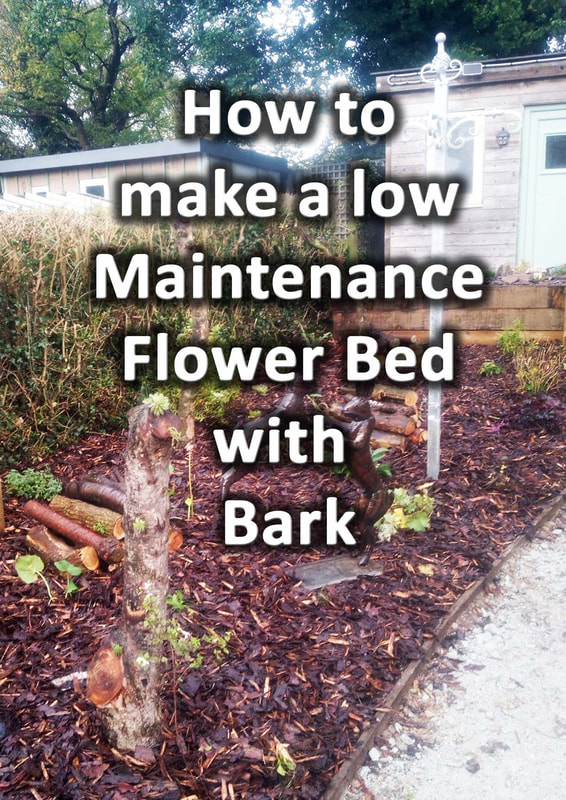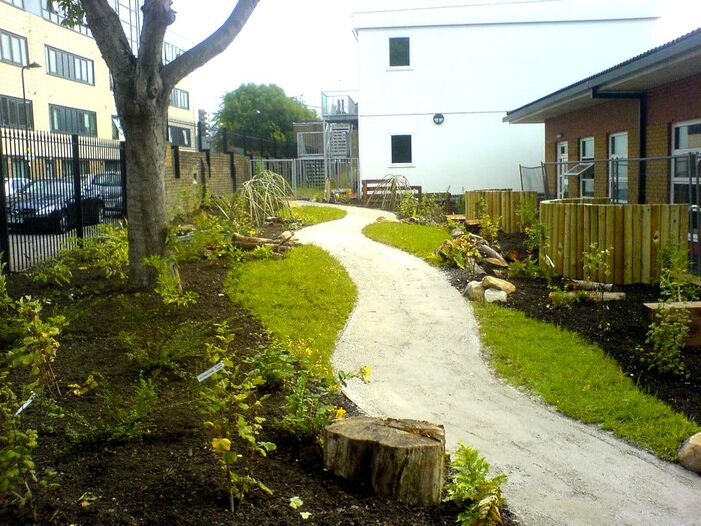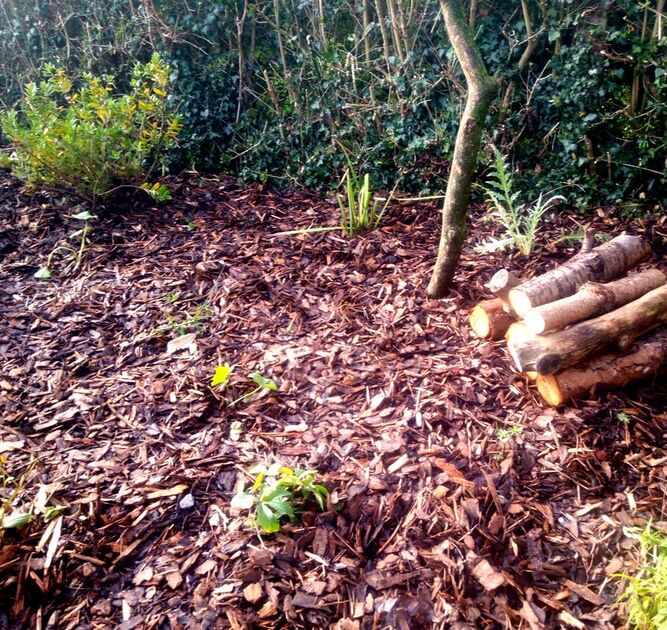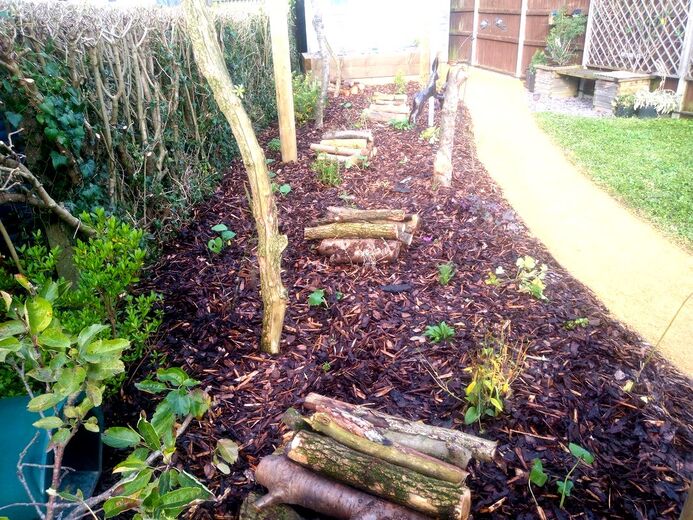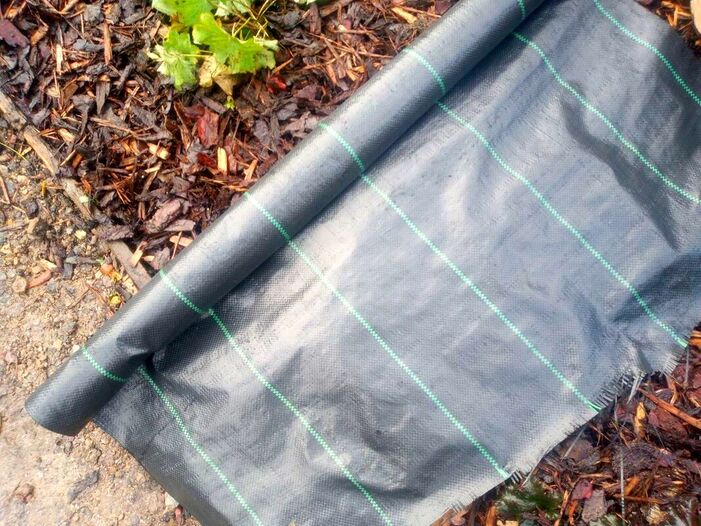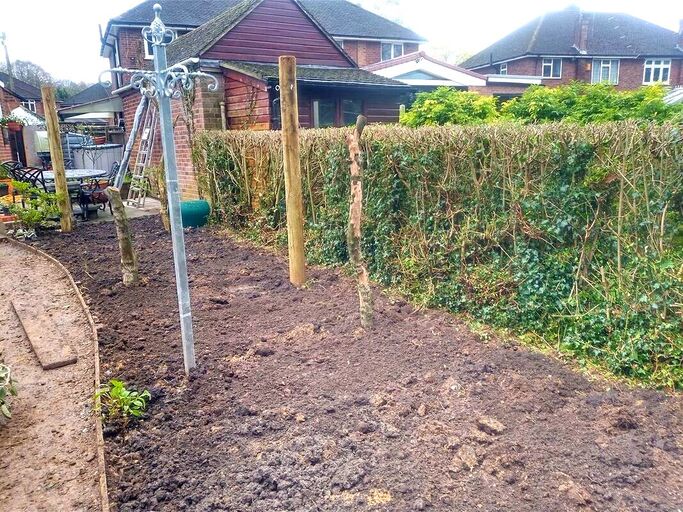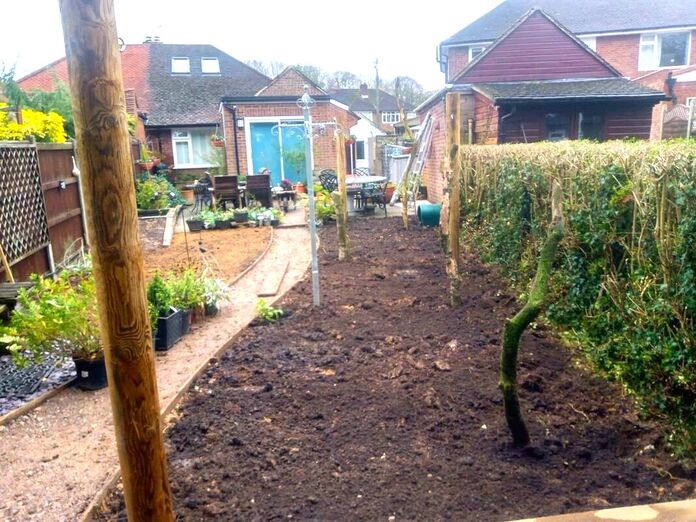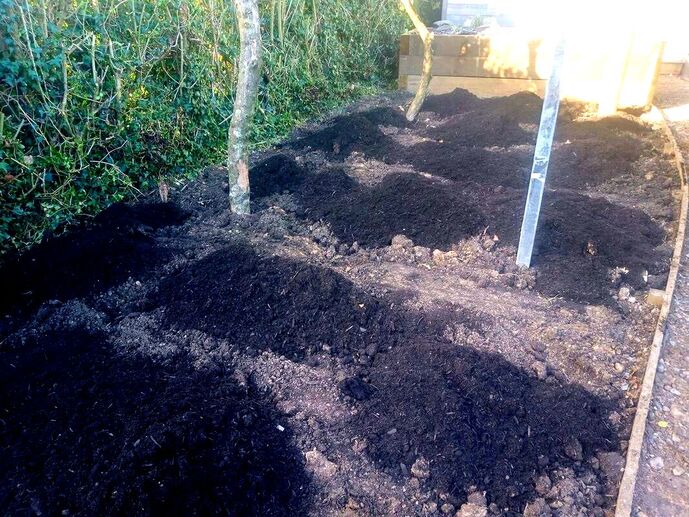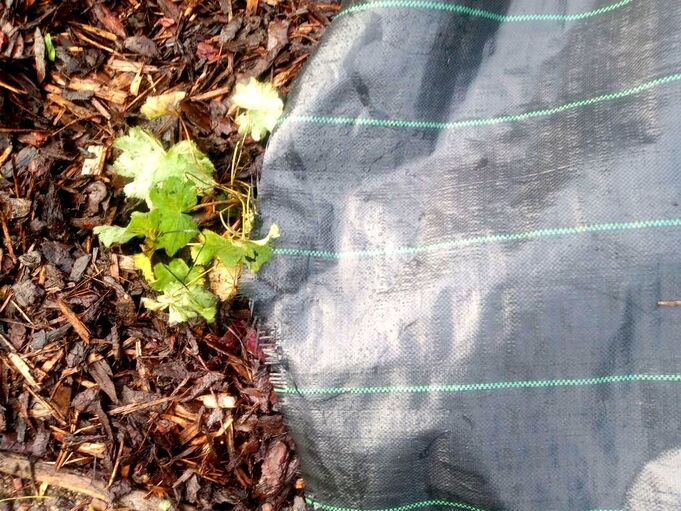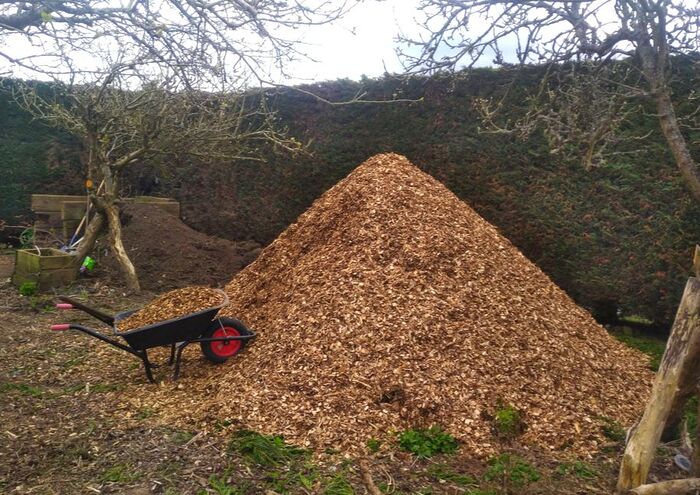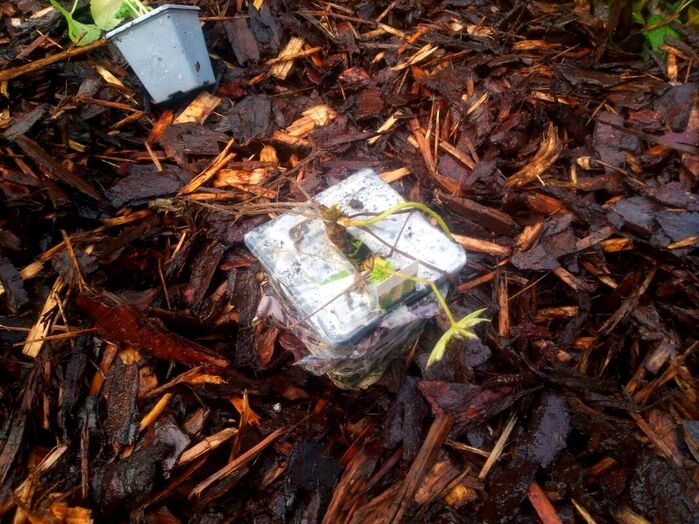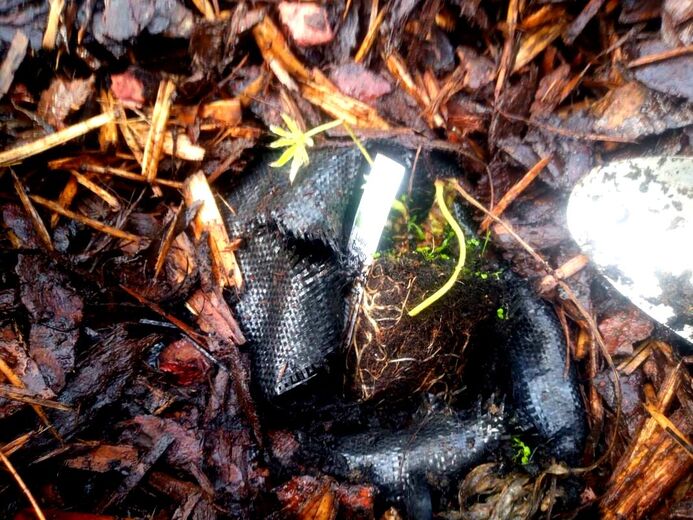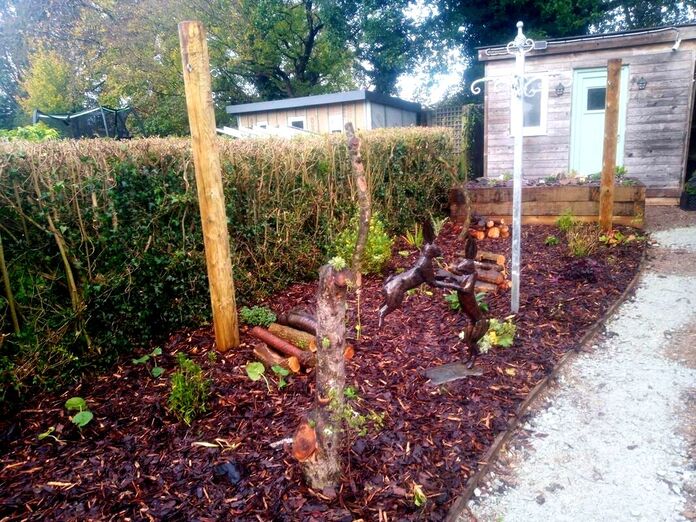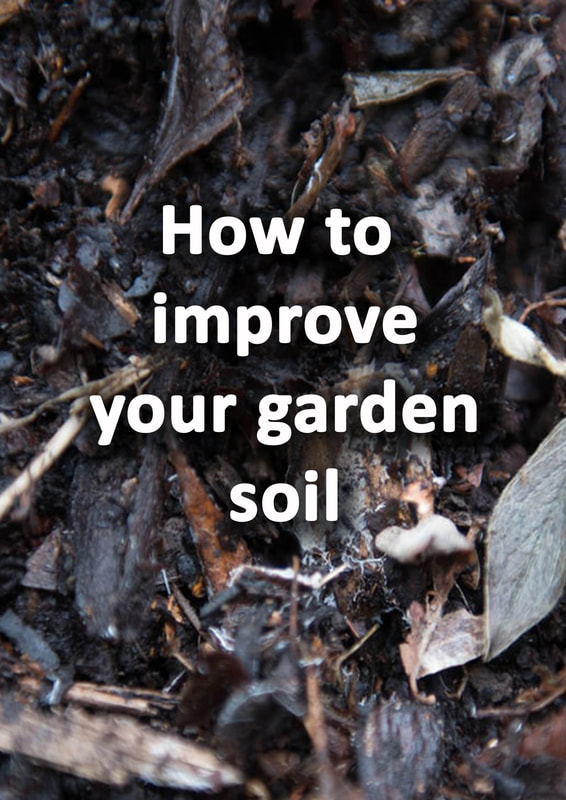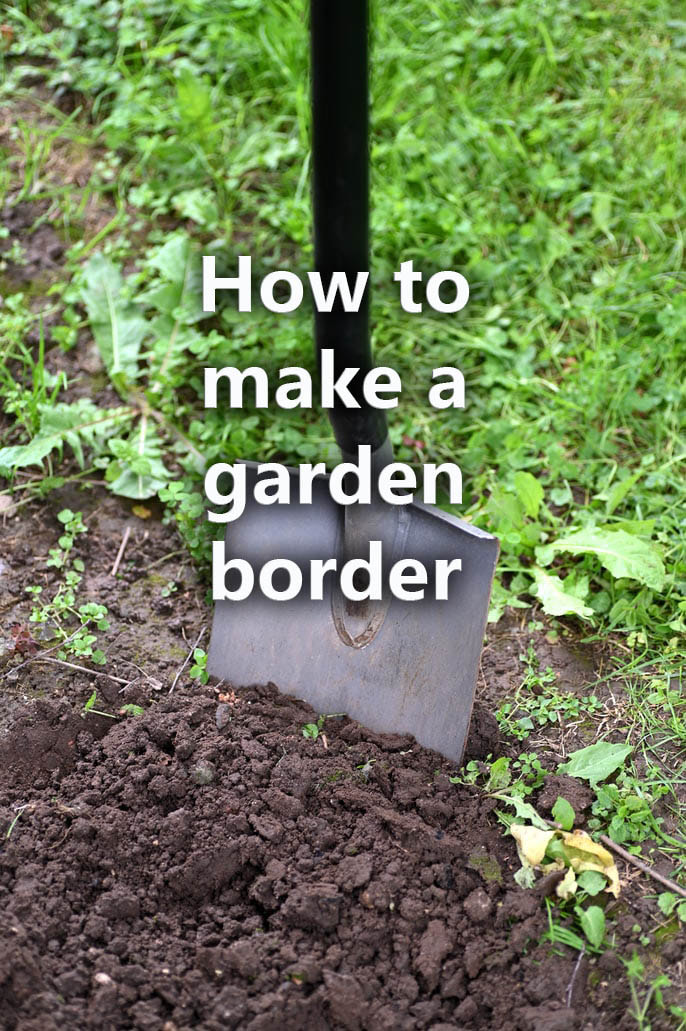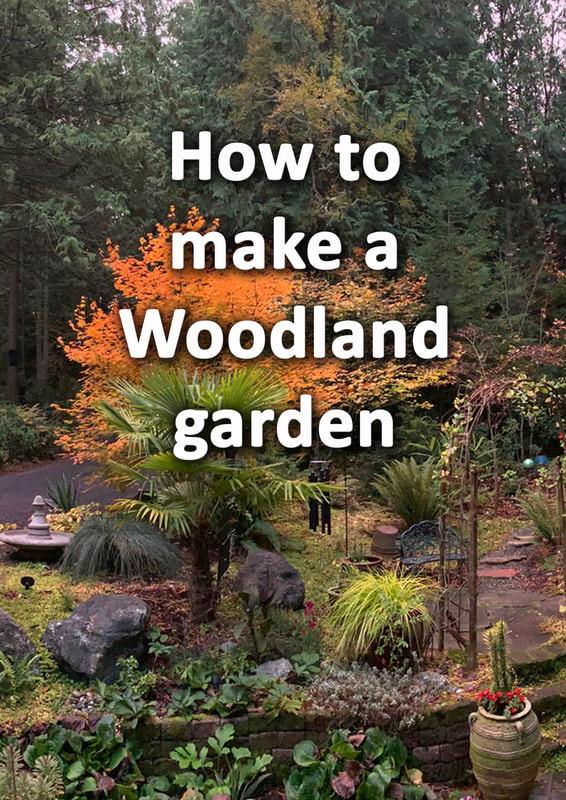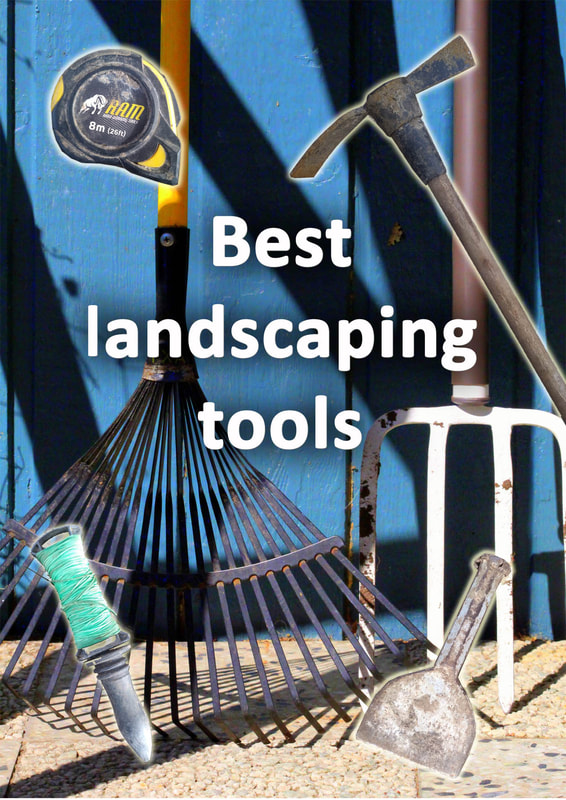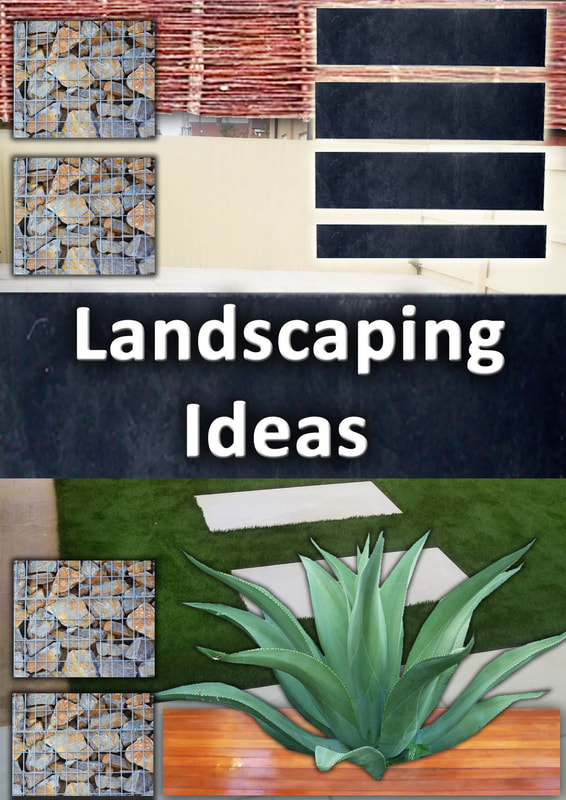|
This article contains affiliate links
Well planted flower borders bring seasonal interest, elevation and colour to our gardens.
The most exciting back yards always have a diverse array of plant species displaying various visual textures and colours. However, there is absolutely no escaping the fact that flower beds are hard work to keep under control. This is especially so when borders are initially planted as plants take time to become established.
During establishment flower borders can become gradually invaded by encroaching weeds and tree saplings.
Therefore the best strategy is to create a low maintenance flower bed with membrane and bark. Once planted, the combination of a robust weed barrier and bark mulch will prevent weed encroachment. This means your plants can establish with ease and reach their maximum potential with little input. In this article I will show you how to create a low maintenance flower bed with bark, step by step. Should you put bark on flower beds?
Bark mulch and wood chips help to retain moisture, prevent weeds, protect roots from frost and feed the soil. Therefore it is a good idea to put bark on flower beds if you can. What are the benefits of bark mulch?
Bark mulch adds a protective layer to the soil which holds in moisture and protects the soil from the sun. As bark organically breaks down it helps to feed soil ecosystems which keep the soil naturally healthy. These microorganisms help to oxygenate the soil as well as distribute nutrients evenly. Bark also feeds the soil as it breaks down and improves the soils structure. This helps to alleviate and prevent the threat of compaction so plant roots can spread easily. How do I add bark to my soil?
The best way to add bark to your soil is with a wheelbarrow and a rake. If you want to get the very best out of your bark, spread it generously. The thicker the mulch the longer it will take to break down. Try to aim for a minimum of 40mm depth. It is much cheaper to buy bark chippings in bulk either in jumbo bags of tipped loose. I have found one of the best ways to shift bark mulch is with a pitch fork and long handled shovel. Which is better bark or mulch?
Mulch in many ways is a blanket term for various, organic mulching materials. For example organic bark chippings are a form of mulching the soil. However, on the whole, mulches are materials which may break down faster and provide food for the plants below. Bark is thicker and woodier meaning it breaks down much slower. This makes it popular for surfacing play areas and even pathways as well as utilised for mulch. If you want to cover your flower beds in a consistent looking material that lasts, bark is a better choice. What should I lay down before bark?
You do not necessarily have to lay down anything underneath landscaping bark. Allowing bark to make direct contact with the soil will enable the soil to breathe and invigorate soil life. However, bark in contact with the soil will degrade much faster than on a membrane. Therefore, it is advised to add a generous thickness of bark when applying straight to soil. To provide extra protection from weeds it is advised to lay a weed suppressant membrane underneath bark. The barrier between bark and topsoil will make the bark degrade much more slowly and look better for longer. For even more protection you can spread a 10mm layer of sharp sand under the membrane. This will allow surface water to drain away faster reducing the chance of bark decomposing prematurely. How to create a low maintenance flower bed with bark step by step?
Step 1: Dig over the ground deeply and remove any perennial weeds or roots from the soil.
Step 2: Work the soil to an open and crumbly texture relieving any compaction and clods. If you have particularly heavy soil such as clay, work in plenty of sharp sand and organic matter. For more information on how to improve your garden soil read our guide here.
Step 3: Supply and spread a 50mm layer of tree and shrub compost evenly to the surface of the soil. This element is not essential but will reap the best results for newly planted plants.
Step 4: Supply and lay a robust, weed, suppressant, membrane to the surface of the flower border. Make sure the membrane overlaps by at least 100mm near joins. Peg down the membrane where necessary with membrane pegs.
Step 5: Supply and spread a 40-50mm layer of bark mulch or wood chippings to your flower border. It is more economical to buy bark in bulk such as jumbo bags or loose loads. Work out how large your bed is in square metres and then times it by the depth. For example, if your border is 30 square meters and you want 50mm of bark the calculation would be.
30 x 0.050 = 1.5 Therefore you would need 1.5 cubic metres of bark. Typical jumbo or bulk bags hold about 0.6 cubic metres of volume. Therefore, for this example, you would need about 6 jumbo bags of bark.
Step 6: Supply the shrubs, plants and bulbs you want and set them out upon the bark surface. Make sure you have allowed suitable space between the plants for them to establish.
Step 7: To individually plant your plants, pull back your bark to uncover the membrane. Using a sharp knife, cut an ‘X’, planting, pocket inside the membrane. Excavate a planting pit and plant your plants individually into the flower border. Try to plant your plants so they sit slightly proud of the soil line. This will stop the bark from swamping the young plants when you re-spread the bark.
Step 8. When you have completed the whole bed give all the plants good water in. The best time to plant a low maintenance flower bed with bark is autumn. This gives the plants plenty of time to establish before the next growing season.
Thank you for reading our article on how to make a low maintenance flower bed with bark. Below we have linked to more relevant articles you may find useful.
'As an Amazon associate I earn from qualifying purchases'
0 Comments
Leave a Reply. |
The Author
|
Landscaping services across Buckinghamshire, Amersham, Aylesbury & High Wycombe
Hyde Heath, Amersham, Buckinghamshire |
|
